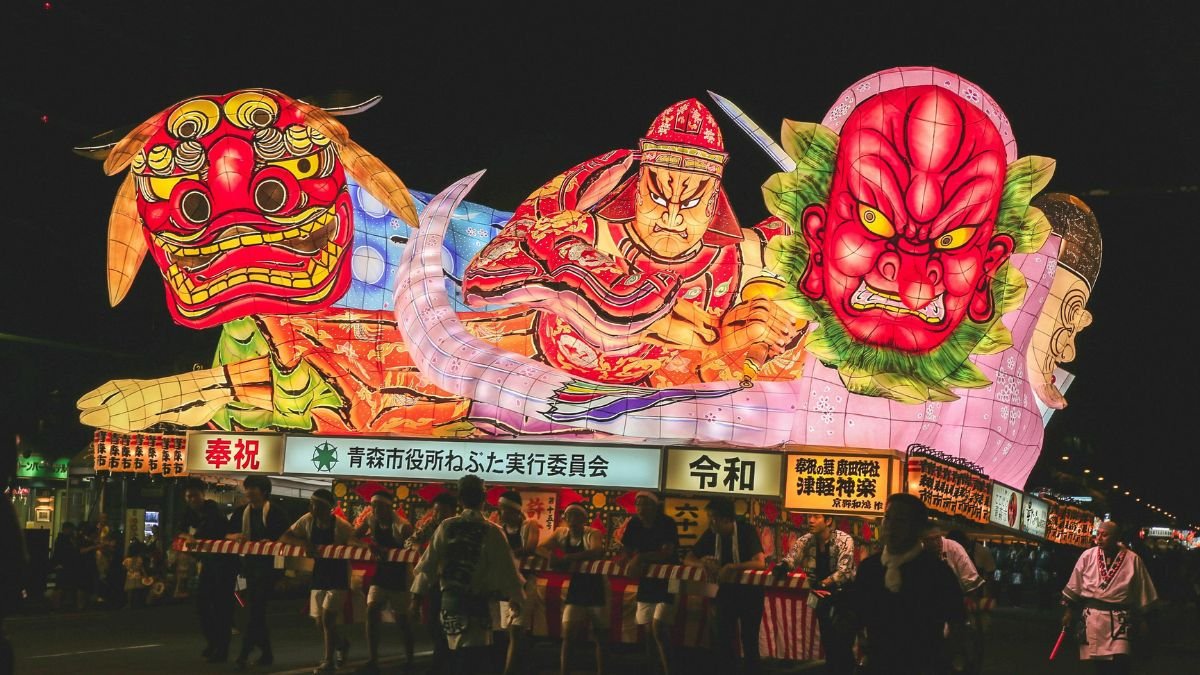Japan is renowned worldwide for its colorful festivals, traditional culture, and vibrant celebrations. The summer season, particularly the Matsuri season, is considered the heart of Japanese tourism. During these months, not only locals but also millions of foreign travelers come to participate in these festivals. Drums, dances, fireworks, traditional costumes, and delicious street food—all combine to make Japan’s summer memorable.
If you’re planning to visit Japan in 2025, these 10 festivals should definitely be on your list. Let’s learn about them in detail:
Gion Matsuri (Kyoto)
Kyoto’s most famous and historic festival, Gion Matsuri, is celebrated every year in July. This festival is over 1,100 years old and is considered a Japanese cultural heritage.
Here, huge decorated wooden floats are pulled by hundreds of people.
The beautiful decorations on the chariots, people dressed in traditional clothing, and the sound of musical instruments create a mesmerizing atmosphere.
This festival lasts almost the entire month of July, but the processions on July 17th and 24th are considered the most special.
When people walk through the narrow streets of Kyoto singing “Kon-chiki-chin,” it seems as if time has stopped.
Tenjin Matsuri, Osaka
Osaka’s Tenjin Matsuri is one of the world’s largest boat festivals. Held every year in July, it is entirely river-based.
The festival begins with a colorful procession, followed by a row of boats sailing down the Yodo River.
At night, the entire sky is illuminated with fireworks.
The decorations on the boats, dancing, and traditional costumes make this festival extremely attractive.
This festival showcases the enthusiasm and community spirit of the Japanese people to the world.
Nebuta Matsuri, Aomori
If you love giant lantern floats and drum beats, the Nebuta Matsuri in Aomori is perfect for you.
Held in the first week of August, this festival is known for its grand lantern floats.
These lanterns are often shaped like warriors and historical figures, and can reach heights of 5 to 9 meters.
The entire city is transformed into a magical atmosphere with drums, flutes, and dancing.
Nebuta Matsuri is so popular that millions of tourists visit Japan to witness it.
Awa Odori, Tokushima
If you want to see Japanese traditional dance, don’t miss the Awa Odori in Tokushima.
This festival is held every year in August and is also known as the “Dance Festival of Japan.”
Thousands of dancers wearing traditional “yukata” dance here, and people chant “Yatto sa, yatto sa!”
Women and men perform special dances in a bowed posture to the beat of drums and flutes.
Awa Odori is a beautiful manifestation of energy and festivity in Japanese culture.
Kanda Matsuri, Tokyo
Tokyo’s Kanda Matsuri is one of Japan’s most impressive religious festivals.
This festival is held every two years and will be held again in 2025.
People carry “mikoshi,” or portable shrines, on their shoulders and carry them around the city.
Thousands of devotees, dressed in traditional costumes, take to the streets of Tokyo, filling the city with a religious and festive atmosphere.
If you’re visiting Tokyo, this experience will be unforgettable.
Kanto Matsuri, Akita
The Kanto Matsuri in Akita is famous for its unique style.
In this festival, people carry tall bamboo poles adorned with dozens of lanterns.
Performers balance these poles solely on their shoulders, waists, or foreheads.
At night, when hundreds of lanterns glow simultaneously, the entire scene appears like a dream.
This festival is a perfect blend of strength, balance, and art.
Hakata Gion Yamakasa, Fukuoka
This festival in Fukuoka is one of the most exciting festivals in Japan.
People race huge chariots through the city streets.
These chariots (Kazariyama and Kakiyama) are approximately 10 meters high and weigh hundreds of kilograms.
Teams of men chase them, shouting “Oisa! Oisa!” as they run.
This festival not only symbolizes courage but also reflects the energy and passion of Fukuoka as a whole.
Obon Festival (Nationwide)
Obon is a traditional Buddhist festival in Japan, celebrated nationwide in August.
It is believed that the spirits of ancestors return to earth to visit their families during this time.
People welcome the spirits by lighting lanterns and floating them in rivers or the sea.
The “Bon Odori” dance is its hallmark.
Obon is not just a religious festival, but also an opportunity to experience the depth of family and relationships.
Sumida River Fireworks (Tokyo)
If you love fireworks, Tokyo’s Sumida River Fireworks Festival is perfect for you.
It takes place on the last Saturday of July every year.
Hundreds of fireworks illuminate the night sky.
People sit on the riverbanks and enjoy this amazing sight.
This festival is a perfect blend of Tokyo’s modernity and traditional celebrations.
Snow Festival Preview – Summer Edition (Sapporo Pre-Summer Events)
Although the Sapporo Snow Festival takes place in winter, it will also be held in summer before 2025.
Conclusion
Japan’s summer festivals are not just entertainment, but a glimpse into Japan’s deep culture, traditions, and community spirit. If you visit Japan in 2025, these festivals will make your experience even more memorable. Whether it’s Kyoto’s grand Gion Matsuri or Tokushima’s energetic Awa Odori, each festival has its own unique identity.
